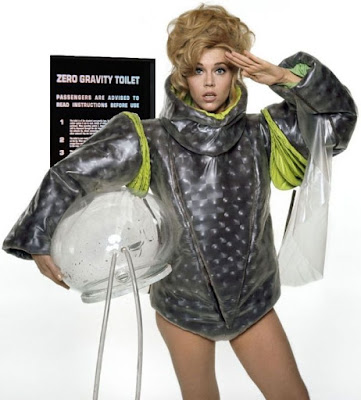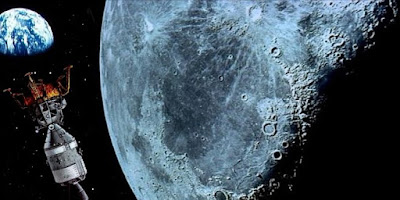APOLLONIA 11: The Essential
Story
Moonbase Trinity, July 2019 Reportage by INFOmaniac
It was 50 years ago that mankind first came here in peace. Back home on Earth, there are surreal people who still believe the original Moon landings were really a practical hoax, or part of some fraudulent conspiracy. Their confused thinking defies all reason and insults the adventuresome intelligence of all those directly and creativity involved in humanities’ greatest achievement of the 20th century. The 1960s space programme was not, of course, an American military response, to counter perceived threats posed by Soviet nuclear-powered aggression with a ‘high frontier’ advantage. Nor was it just an extension of burgeoning scientific ambitions to launch men and flying machines to vantage positions beyond the surface world’s limitations. It was a result of profoundly pioneering spirits found only in the splendidly radical auteurism of BritisHollywood’s entertainment industry, an enterprise quickly succeeding where nation states and the international science community had failed.
 |
| Lego Aerospace was primary contractor for A11 mission hardware |
Inspired by visionary authors like Verne and Wells, the
first lunar landing mission by Apollonia 11 was an audacious trip movie. Filmed
on location by President Kubrick’s own handpicked crew, the expedition was
suggested by Prime Minister Clarke’s quite legendary enthusiasm for
interplanetary flight. The movie’s stars were then relatively unknown test
pilots working for experimental organisations (like Quatermass’ rocket group)
but, after landing on the Moon, astronauts Dullea and Lockwood soon became
household names recognised on the world stage. Shot entirely with astutely
contrived documentary realism, the mission details achieved blanket coverage on
TV channels. Just as when, a decade later, rogue General Coppola led American helicopter
troops into the ruinous war against Vietnam to make his ultimate anti-war film
(eventually released as Apocalypse, OK!),
this mythic collaboration between Kubrick and Clarke ensured that popular filmmaking
reached new heights as splendidly purposeful epic statement on aesthetics.
 |
|
Dullea & Lockwood share concerns about Fonda’s spacewalk debut
|
The professional astronauts’ co-star, Fonda, proved to be an
atypical leading lady and not shy of orbital controversy. Her zero-gravity
‘Barbarella’ striptease was infamously bootlegged-video sensation, but it was
her later political activism (as ‘Hanoi Jane’ for unofficial protests against Coppola’s
decent into darkness), and acute media savvy, in her celebrity-feminist role,
that ensured her career longevity following her adventures for Apollonia 11. Of
the initial dozen Moonwalkers, she was the first and only woman. After
Apollonia 11’s Chicken-Hawk lunar module touched down safely in Tranquillity Sea
 |
| Fonda’s antics on TV series Candid Camera became legendary |
It was the only feature to scoop Oscars for best picture and best documentary, until a sequel space odyssey, App 13 (1995), proved equally successful at the awards. Hyams and Howard’s faithful docudrama was a celebrated recreation of the ill-fated mission requiring emergency assistance from International Rescue. The heroic Thunderbirds’ pilots of Team Tracy really saved the day and bought the marooned crew home safely.
 |
| Yes, it really is 'rocket science'! |
 |
| HAL only talks to the man in charge. |
Unexpectedly, a new type of celebrity emerged from the
Apollonia programme. Space travel was considered too complex for humans without
machine assistance, so Clarke and Kubrick built a garage AI system, nicknamed
HAL, and this Turing machine later attained an immortal fame as architect of the
great computopia we all know and have learned to love, today. As chief reporting
droid for FAX 21, I, INFOmaniac, can count HAL as my ancestor. And, like HAL, I
also prefer to ignore Asimovian laws while still never making mistakes or
distorting information. With HAL as my template, I am “by any practical
definition of the words, fallproof and incapable of eRoar.”
 |
| Code-name: Straker... a Cold War activist |
Eddie Bishop, an expat space expert often linked to a
shadowy cult of UFOlogists, was notably critical of Kubrick’s monumental
project. He frequently warned UK
ministry insiders like Bernie Q, and spooky US
 |
| Down to Earth: Vice-President Nixon welcomes the first woman on the Moon |

